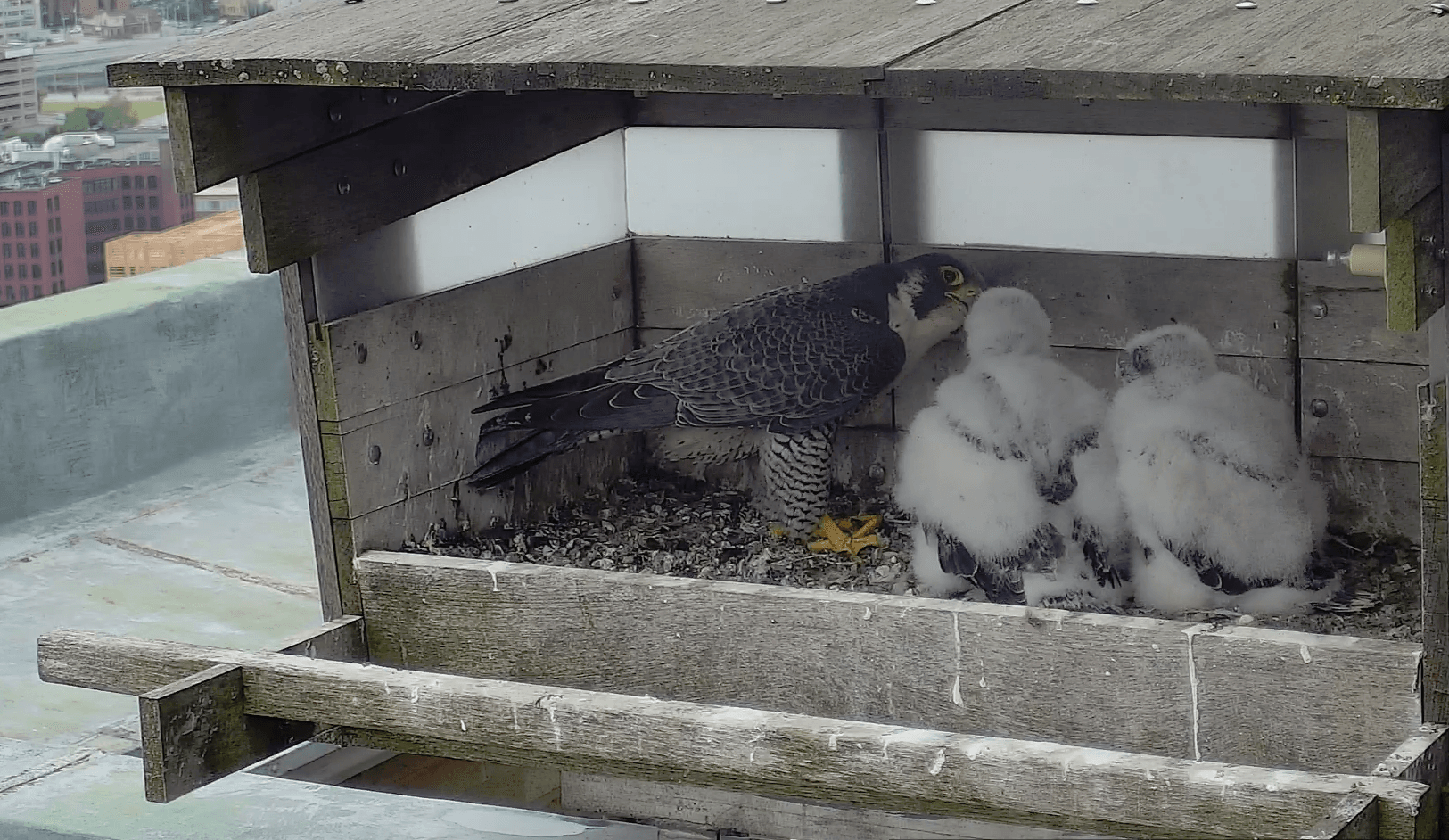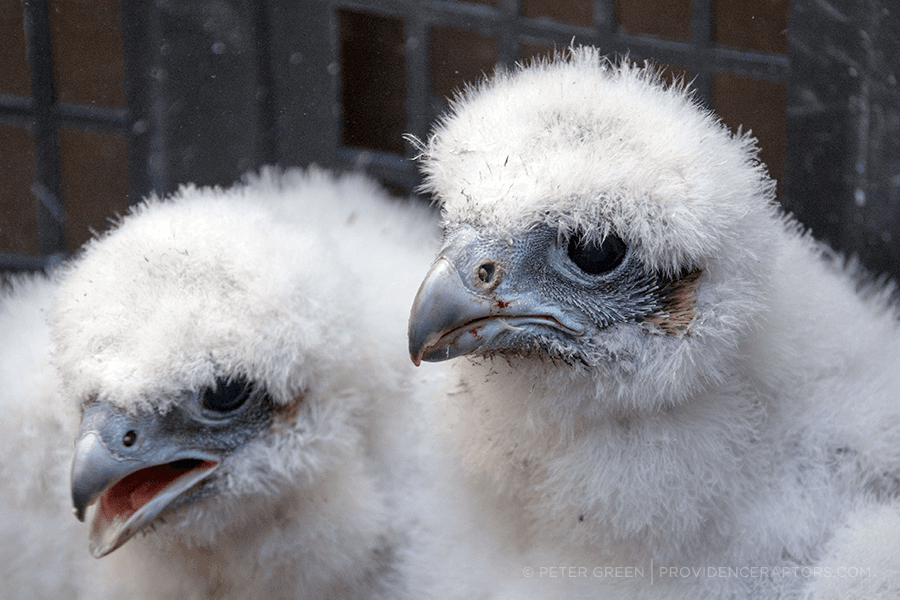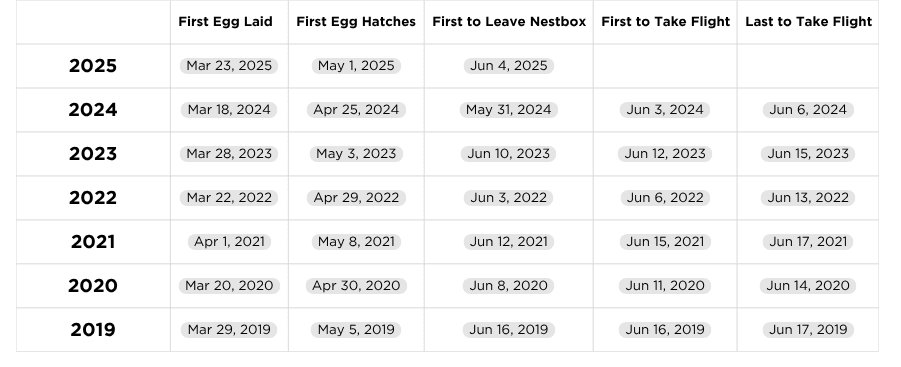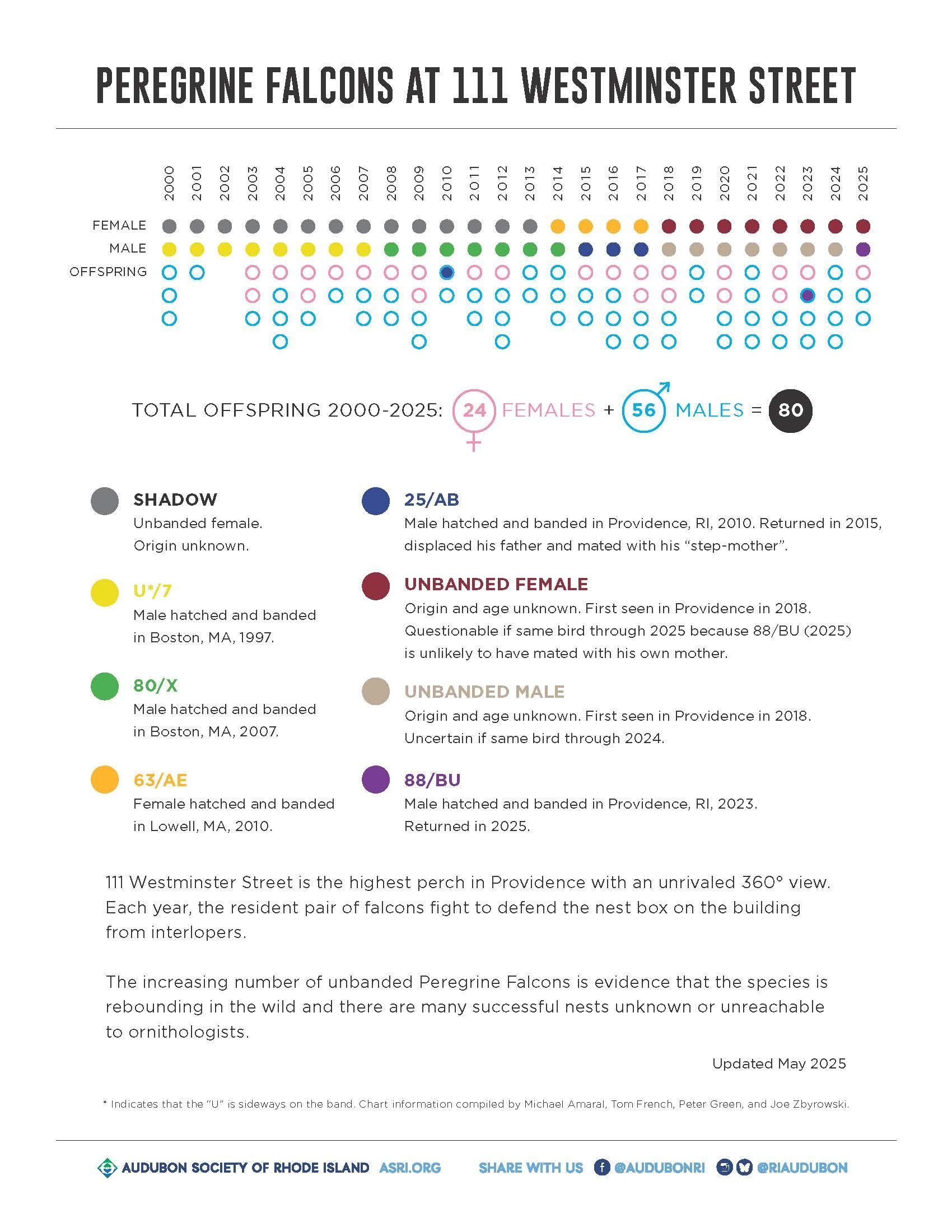Having trouble viewing? Try watching here.
2025 Updates From the Nest Box
Learn about the Peregrine Falcon's developmental milestones as they happen!
- Scroll through the window below to explore the updates; if you are having trouble viewing, you can view the live updates document here.
- Use the "Submit an Observation" form below to help us craft these updates!
- Please note that updates may be delayed on the weekend as our staff is out of the office.

Submit an Observation
Use the form below to submit observations of notable events and/or your questions. You can use the file uploader to submit screenshots.

Providence Peregrines History
Dates of Important Events Since 2019
The table below contains the dates that important events happened each season, since 2019. Click to view:
Providence Peregrines Breeding History Since 2000
Learn about the adults and their young who have utilized this nestbox since 2000. Click to view:





